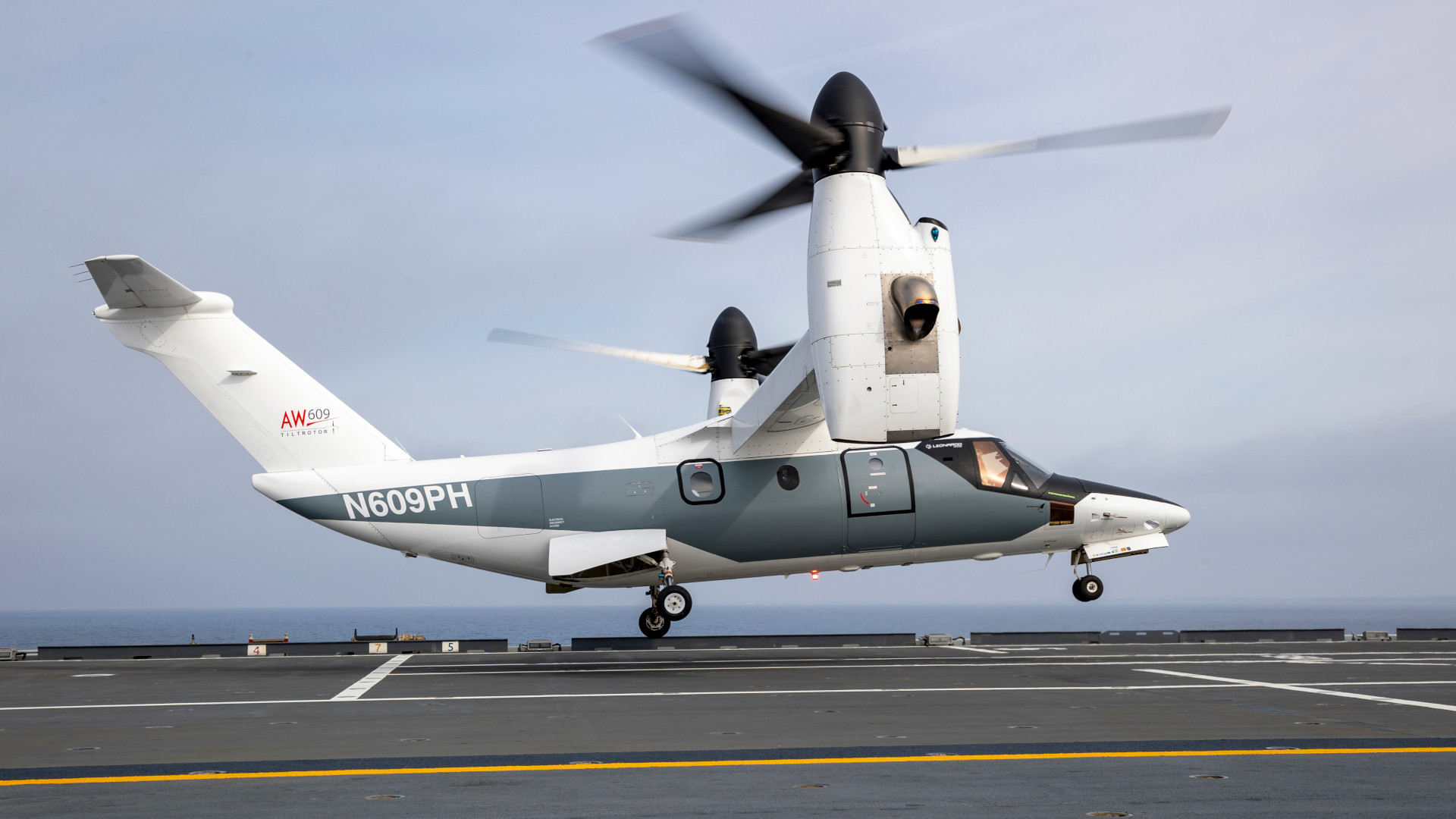The Leonardo AW609 operated from the Italian Navy’s light aircraft carrier ITS Cavour during a series of tests earlier this year. The ship trials are a major milestone for the AW609 that further points to potential future military service for the type in Italy after more than two decades of protracted development. This news also comes at a particular low point for its distant cousin the Bell-Boeing V-22 Osprey, the only tiltrotor currently in operational use anywhere in the world, as a result of the ongoing fallout from a fatal crash last year and a subsequent three-month-long grounding of the fleet worldwide.
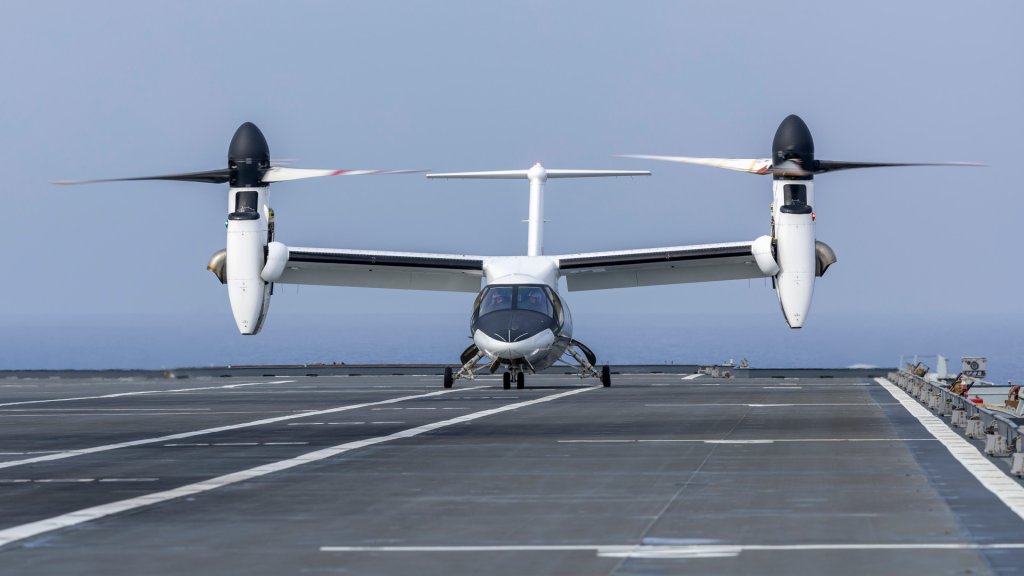
The AW609’s ship trials occurred in April, but Leonardo only publicly announced their completion earlier today. The tiltrotor conducted the trials from the Italian Navy’s Maristaer Grottaglie Naval Base in the southern end of the country and with ITS Cavour some 20 nautical offshore, according to the company.
“Integral to the demonstration phase, was an initial test campaign developed and executed in a full synthetic environment leveraging the AW609 development/engineering simulator, which is located in Cascina Costa [in northern Italy],” according to Leonardo’s press release today. “Digital twin applications delivered a preliminary assessment of the activities and maneuvers, which were later performed in operation to the benefit of capability development, time reduction, safety, and sustainability. Deck landing and take-off procedures were performed in over 15 different conditions (including wind conditions), featuring straight-in and lateral approach, vertical landing, vertical take-off, and lateral exit. “

With the trials in April, the AW609 has joined a very small club of tiltrotors that have, to date, landed on and taken off from a ship, which includes the Osprey and its predecessor the Bell XV-15. The initial development of what evolved into the AW609, which started in the late 1990s as a joint venture between Bell and what was then Agusta Aerospace, leveraged work done on the XV-15.
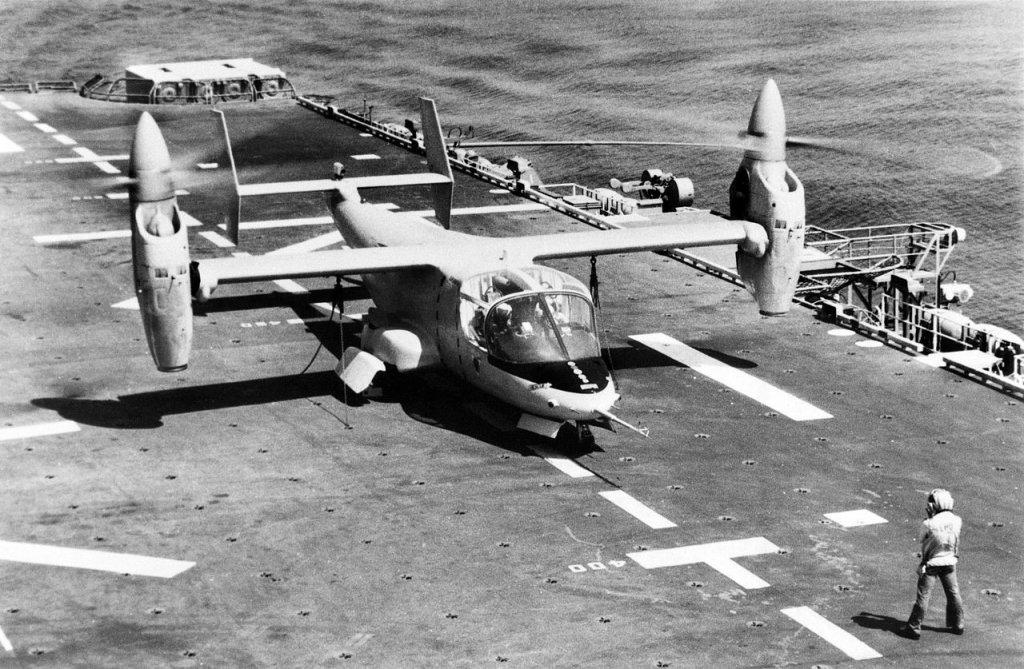
“Flying on a ship is a very difficult environment because the wind is sometimes unpredictable and you can have [other] extreme condition[s],” Gianfranco Cito, head of the AW609 Flight Test Department at Leonardo said in a video interview that the company also released today. “The fact that [the AW]609 perform[ed] well in this condition give[s] us the confirmation that the handling qualities of this aircraft are good.”
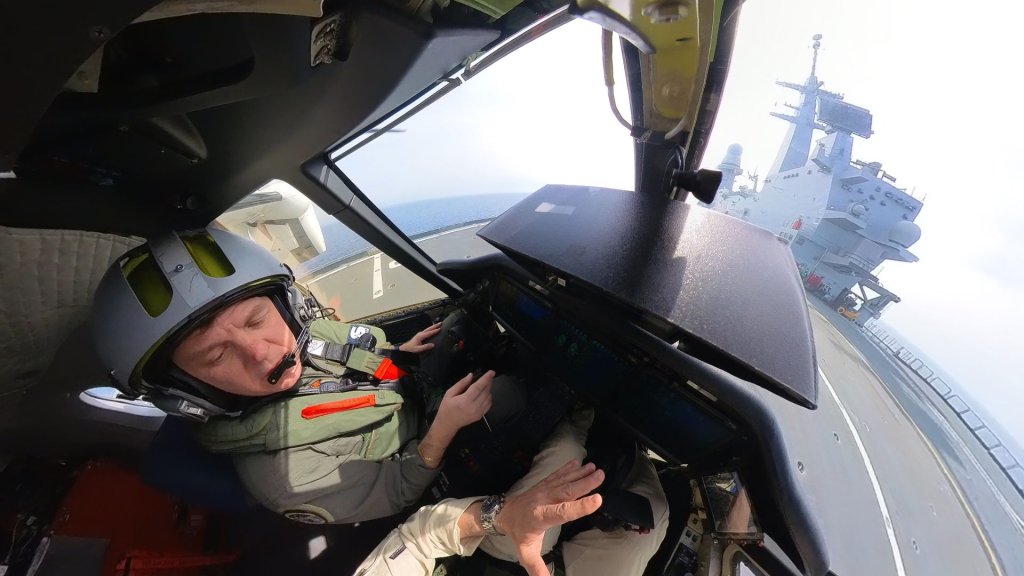
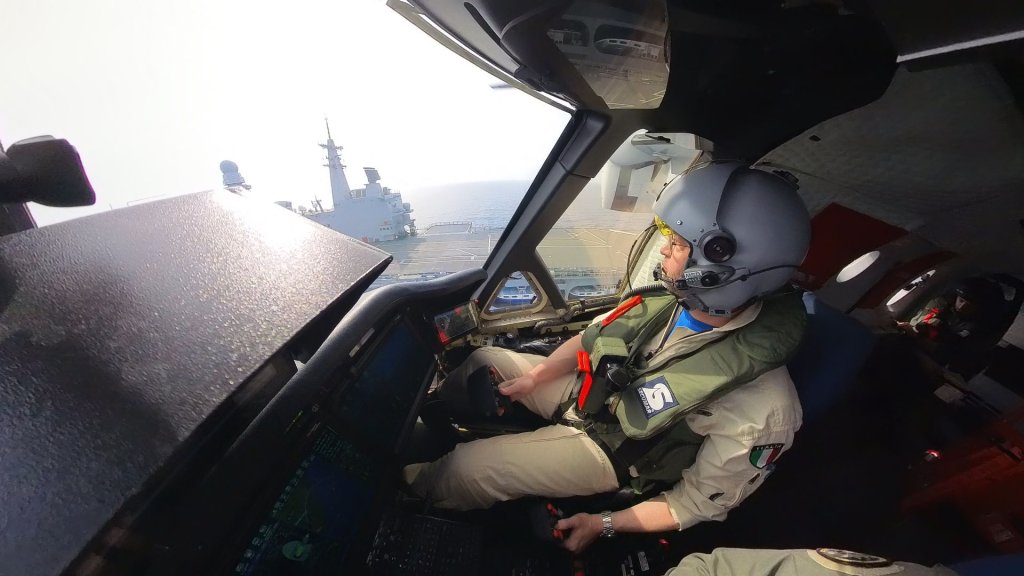
As already noted this is a major milestone for AW609, the development of which suffered repeated delays over the years, as well as a fatal crash in 2015. The first example in a production-representative configuration only took to the skies in 2022.
The design as it exists now has a stated cruising speed of 270 knots and a maximum range of up to 1,000 nautical miles with the help of auxiliary fuel. It has an internal payload capacity of around 6,000 pounds, which can include up to 12 passengers. Its pressurized cabin, a feature the V-22 notably lacks, can be reconfigured for other roles, including for search and rescue (SAR) missions.
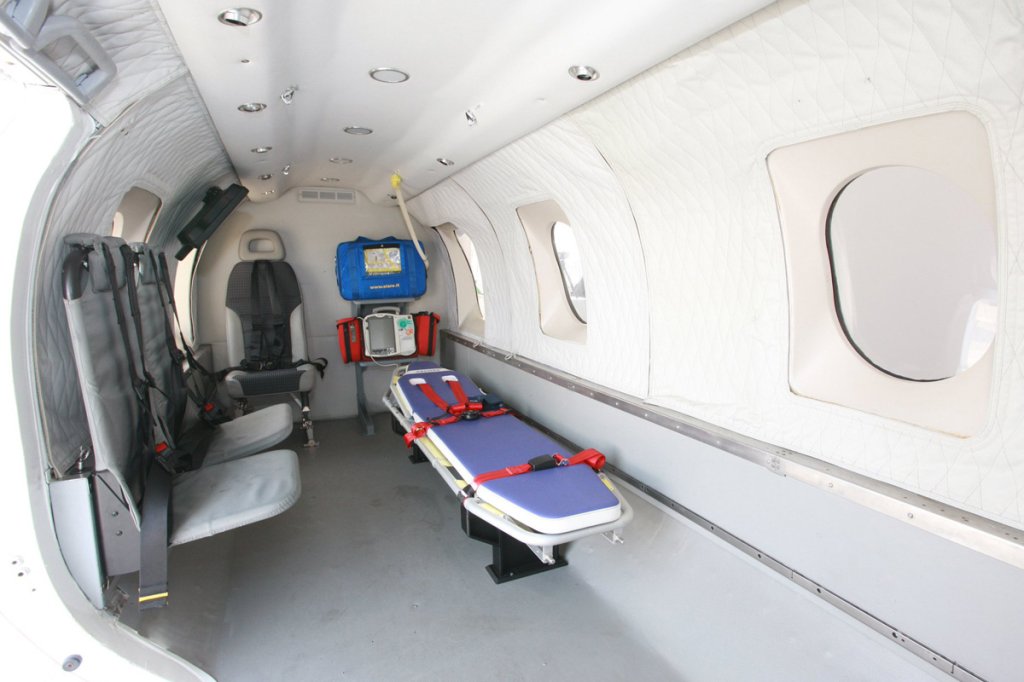
With a maximum gross weight of some 18,000 pounds, the AW609 is notably smaller than the Osprey, which can operate in vertical takeoff and landing mode at up to 52,000 pounds. However, the AW609’s pressurized cabin also notably allows it to fly higher (and better avoid bad weather) during daily operations than the unpressurized V-22.
Tiltrotors, in general principle, offer significant advantages over traditional helicopters when it comes to their speed, range, and maximum operating altitude, while retaining the benefits that come from being able to take off and land vertically, as well as hover. Historically, as evidenced how long the AW609 has been in development, that combination of capabilities has come at great cost and complexity.
At present, the first operator of the AW609 is set to be the Joint Aviation Command (JAC) of the United Arab Emirates (UAE), which announced its intention to acquire the tiltrotors for use in the SAR role back in 2015. Whether that deal, which was supposed to have seen the first three examples delivered in 2019, ultimately goes through remains to be seen.
The newly disclosed trials with Cavour also underscore the Italian Navy’s stated interest in acquiring tiltrotors with a particular eye on ship-to-shore logistics.
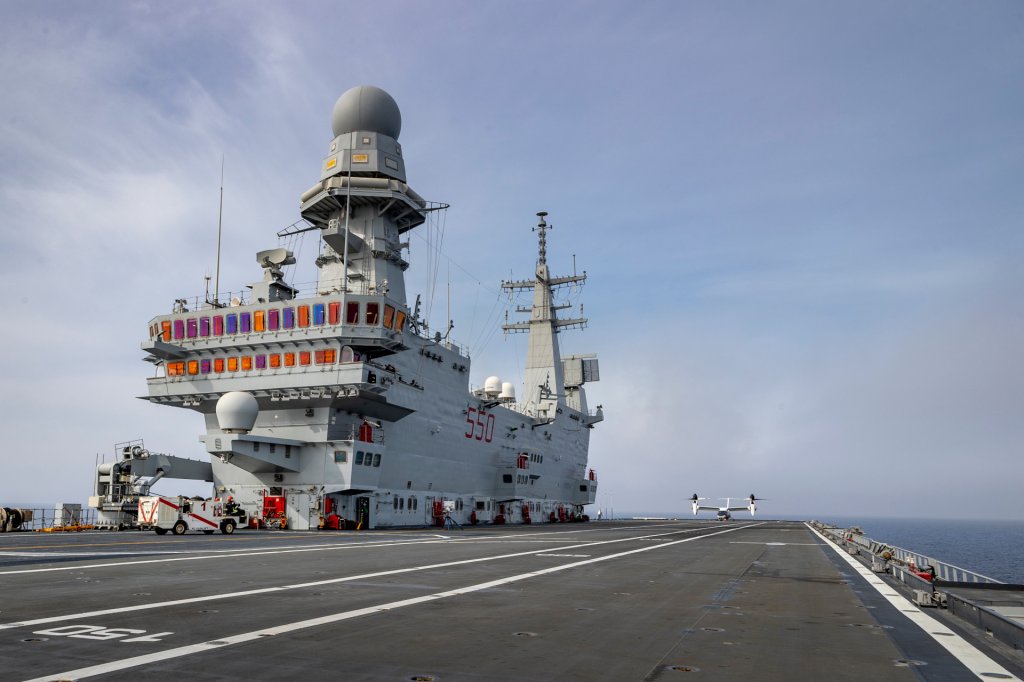
“The Italian Navy is closely looking at tiltrotor technology because. thanks to its characteristics, it could represent a suitable option for the requirements of offshore logistical support,” “In particular, the tests of the AW 609 air vehicle onboard the aircraft carrier Cavour could represent our first step in evaluating the interoperability of the mentioned aircraft onboard Italian Navy ships.”
The Italian Army has expressed interest in fielding tiltrotors in the past, as well.
“The [shipboard] demonstration trials are the latest step taken under the activities carried out by a joint working group established in 2022 including Leonardo, the Italian Navy, the Italian Army, and Guardia di Finanza (Italy’s Customs Police),” Lenoard further noted in its press release today. “The assessment performed by the working group would help to define the benefits for logistic transport (vertical take-off/landing, long range, fast point-to-point connection with above-the-weather cruise) and, later in the future, maritime surveillance (vertical take-off/landing, fast transfer to patrolling area and larger area coverage).”
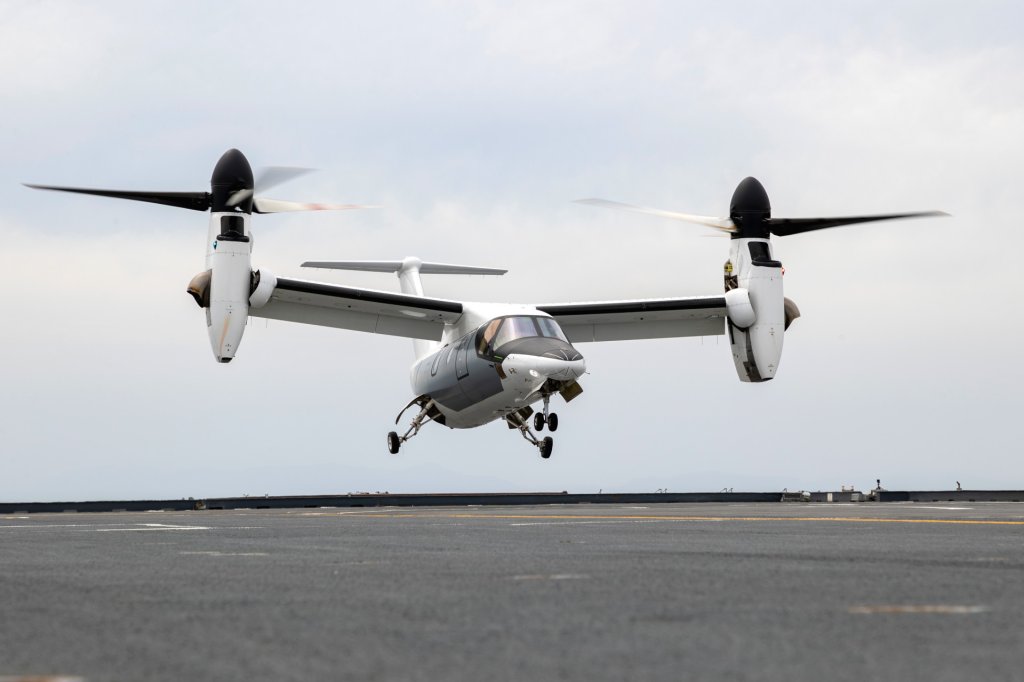
Leonardo has also been marketing the AW609 to non-security forces customers and is in the process of obtaining a civil certification for the type through the U.S. Federal Aviation Administration (FAA), which would be a first for a tiltrotor. Its pressurized cabin could make it attractive for use in commercial aeromedical and VIP transport roles, among others. When it comes to transporting VIPs, the AW609 could offer an ultimate level of convenience with its point-to-point helicopter-like flexibility and range and speed of a fixed-wing turboprop.
As already mentioned, progress on the AW609 does also come amid renewed criticism of the Osprey, which had its own troubled development and has continued to suffer significant issues since entering operational service first with the U.S. Marine Corps in 2007. The U.S. Air Force and U.S. Navy now operate versions of the V-22, as does the Japan Ground Self-Defense Force (JGSDF).
The Osprey program is presently facing especially serious backlash, including from members of Congress in the United States, as a result of the fallout from a fatal crash of an Air Force CV-22 off the coast of Japan last year. That accident, the causes of which remain murky, led to all Ospreys worldwide being grounded for around three months, with some limited operational exceptions. Though the grounding order was finally lifted in May, questions have been raised about the safety of the V-22s and the U.S. military has imposed significant fleet-wide flight restrictions.
“Today, we are methodically looking at materiel and non-materiel changes that we can make to allow for a full mission set without controls in place,” Navy Vice Adm. Carl Chebi, head of Naval Air Systems Command (NAVAIR), which oversees the joint service V-22 program, told lawmakers at an at times extremely tense hearing earlier this month. “I will not certify the V-22 to return to unrestricted flight operations until I’m satisfied that we have sufficiently addressed the issues that may affect the safety of the aircraft. Based on the data that I have today, I’m expecting that this will not occur before mid-2025.”

“What do you think the consequences will be if we have another V-22 go down and we lose more brave Marines or Airmen between now and the time?” Representative Stephen Lynch, a Massachusetts Democrat, said at the same hearing. “Your whole program’s done. It’s done. If another Osprey goes down, we’re done. This program’s done. So why don’t we ground this [again] now?”
Additional efforts to improve the overall safety and reliability of the V-22 fleets are ongoing. This includes plans to finally implement a fix to a long-standing hard clutch issue with the Osprey, which has been cited in multiple previous accidents. However, U.S. military officials have said this does appear to have been a factor in the crash off Japan last year.
Continued troubles with the V-22, which has struggled on the export market despite interest from a number of countries, could open the door to new opportunities for the AW609. At the same time, there is a question of whether the Osprey’s trials and tribulations, combined with the AW609’s own history, might have the opposite impact.

That being said, despite the challenges they pose, the inherent capabilities they offer mean that there continues to be very active interest in tiltrotor designs, in general, including within the U.S. military. In 2022, the U.S. Army picked a new tiltrotor design, based on Bell’s V-280 Valor, as the winner of its Future Long-Range Assault Aircraft (FLRAA) competition. The V-280 represents a new generation of tilt-rotor technology and you can read more in detail about how the V-280 evolved from Bell’s experiences with the V-22, and its improvements compared to its predecessor, in this past War Zone feature.

Other ends of the U.S. military, including the U.S. Navy, U.S. Marine Corps, and U.S. Special Operations Command, are now eyeing variants and derivatives of the V-280 and other tiltrotor designs, including uncrewed types, as well.
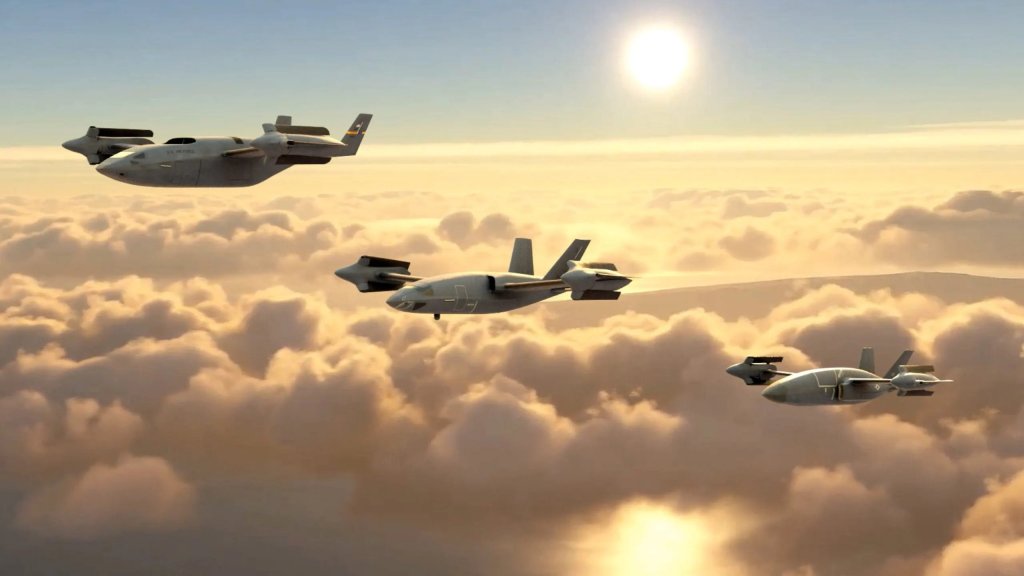
Whatever the future may now hold for the AW609, the successful shipboard testing with ITS Cavour underscores the steady and significant strides the aircraft has finally been making after more than 20 years.
Contact the author: joe@twz.com
